Story published November 2021
Please sign our petition to the ASPCA. Your voices matter!ASPCA Petition
Here’s our story that shows how declawing causes pain and suffering in cats, their owners, and veterinarians.
It shows how declawing causes moral stress in veterinarians and how it is a contributing factor in the issue of suicide in the veterinary profession. Declawing is bad for veterinarians
The ASPCA does not want declawing banned and justifies this horrific cruelty by using the last resort, death or declaw excuse.
Please send the ASPCA this story and ask them to completely condemn this animal cruelty and help us ban it. ASPCA email- publicinformation@aspca.org
Declawing does not keep a cat in a home or prevent a cat from being thrown away, in fact the opposite often happens. Declawed cats often develop behavioral issues like biting, aggression, and not using the litter box because of the pain in their paws. Their owners often throw them away or take them to be killed as in Greta’s sad and tragic story. Greta was killed at an AAHA.org hospital because of her declaw
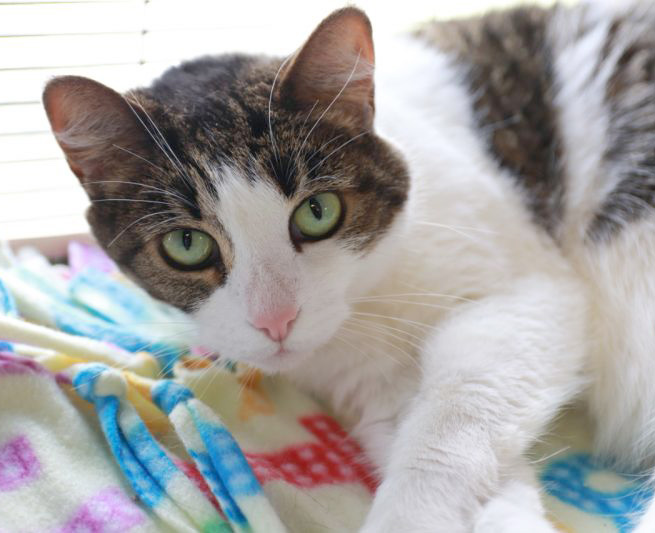
Circle, a 4 paw declawed cat, came in as a stray in April of 2020. They posted everywhere and were unable to find an owner. After stray hold she was adopted but returned quickly due to litter box aversion. X-Rays and exam showed issues in all 4 feet and she had reconstructive surgery to try to remove that excess and reattach tendons. Unfortunately as of now she still has complete litter box aversion, she’s on pain meds and is now on prozac to try to retrain her brain to use the litter box in order to find a home.
Note from a supporter. “My grandmother’s beautiful, declawed cat, Reah, that I recently took over caring for since she is no longer capable. Reah’s first family, before my grandparents adopted her, had her declawed to save their brand new leather furniture.
Then they got rid of her anyway.
Not even her good looks could save her from the “declaw and dump”.
So much for the false notion that declawing keeps cats in homes. I got my love of cats from my grandmother. I hope this horrible practice is banned soon…”
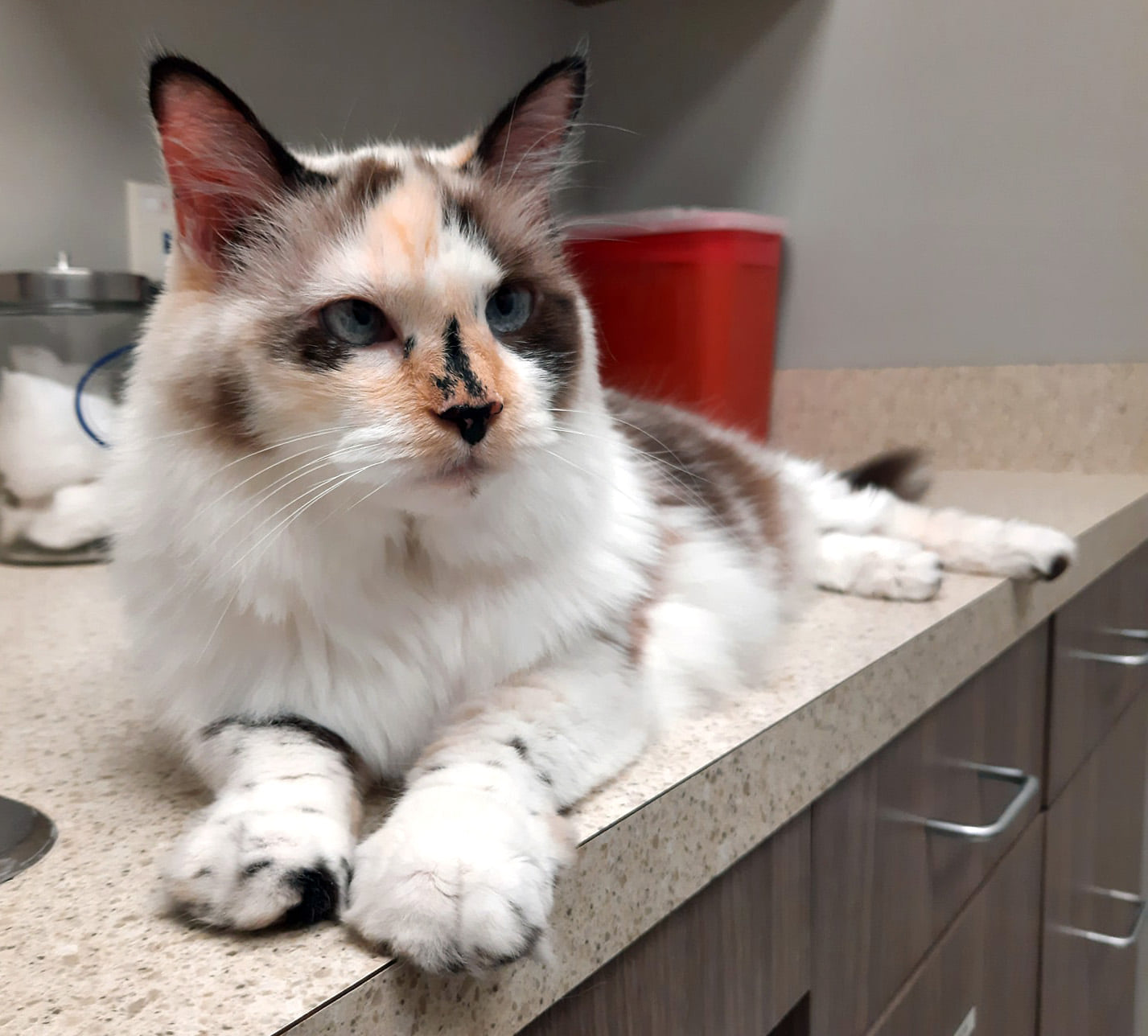
—————————————
Note from a shelter director in Michigan.
“There are no words to describe my ongoing frustrations at veterinarians who declaw and those who follow them.
Declawing cats does NOT keep them in their homes.
“I have been employed with animal shelters for 23 years, the entire time I have had beautiful healthy cats surrendered that are declawed for behavior issues. Many of those cats have been euthanized due to their behavior issues not being able to be rectified.
Cats with claws have fewer behavior issues and have more options for safe rehoming than cats without claws.
I run an open intake small facility, the only facility in the county. We have a 99% placement rate and do everything humanly possible for all of the animals we take in.
Currently I have 19 adult cats, 31% of those cats are declawed (6) and all six of those cats are primarily unadoptable.
Four of them will not use the litter box at all, but are extremely sweet.
One is very reactive/defensive and unhandleable, and one is 15 years old but should be able to find a retirement home (hopefully).
Two of the cats have already had bone fragments and regrowth removed from their paws, the others we are still working on get in for exams/options.
The two that have had the surgery still aren’t using their boxes and we are trying prozac to help retrain their brains not to associate the litter box with pain.
NONE of this should have to be happening! I take in 1500 cats/year resources, gas, time, effort should not have to be used to repair what never should have happened!
It is not these cat’s fault that they are reacting to their pain and suffering as they are and after suffering for years, they deserve to get whatever pain free life we can offer them but to what end?
I do realize I’m “preaching to the choir” with you but as a Director of an open intake facility declawing cats does NOT keep them in homes or find them homes.
We haven’t allowed cats to be declawed that have been adopted from us and it has not diminished our placement rates or our capacity one iota.
Cats do not sit with us longer than before, I have not done reduced intake,
I have not been too full to take in a cat in our community, nothing has changed except that I can sleep a bit better at night knowing that they are living their best lives with all of their toes intact.
Thank you for continuing your fight!
Beth Wellman
Humane Society of Midland County
Shelter Director”
More about this story. Declawed cats who lost their homes in MI
Dear City ,
I work at an open admission shelter. I have never, in almost a decade of working with shelter cats, had one turned in for scratching on furniture. However, I have had plenty of cats turned in that had been declawed and as a result stopped using the litter box (this is the most common) or they started biting, hiding, acting aggressively etc.
I have had declawed cats come in as strays that had tossed out on the street, this happens more often than one would think. I have seen declawed cats come in wounded from being tossed outside and attacked by other animals. These cats had no means to defend themselves. I have seen them come in obese and declawed, not wanting to move around because of the pain in their feet from walking on the un-cushioned bone with excess weight.
One case in particular was a cat that had been declawed, thrown out, she also suffered from a broken pelvis that had healed incorrectly. To see her attempt at walking brought me to tears ad filled me with rage. She was one of the lucky ones, she was adopted, despite biting her adopter. Adopters for declawed cats are hard to find. The even tempered declawed cats will languish in small cages for months at a time because the reality is that no one wants to adopt them.
Declawing did not keep the cats in their safe loving homes, instead it landed them a one way ticket to the shelter or worse. Most declawed cats I have worked with were euthanized due to behavior and health problems. Declawed cats are the most fearful cats that come in, second only to feral cats. They hide in their litter boxes or with their faces pressed in the corner and they don’t move. They are defenseless and they know it.
Cats are a highly intelligent animal, and they know when something as vital as their claws (and the bone on which they walk) has been taken.
I remember well a story a lady told me. She had stopped in to see what cats where up for adoption. I told her what I tell most potential adopters, “The biggest thing I ask, is that you DO NOT declaw your cat.” She looked at me with a very sullen face and said, “I’ll never do that again. I did it once. And when I brought the cat home he sat up on his hind legs and looked at his paws and he just screamed.”
She like most other people did not realize how much pain declawing causes, and her vet didn’t educate her on it. She had to learn about the horrors of this practice herself and at the expense of her beloved cat.
I myself cared for a cat in the shelter for 6 months. I adored this cat, and desperately searched for a home for him.
I received a message from the rescue’s (that works out of the shelter) directer telling me she has found the most perfect home for this cat. I was elated. My sweet boy was going to get a good home and live a good life free of the shelter, free of a cage.
When I received his sterilization paper my heart dropped to my stomach. My precious boy had been declawed. And I knew he was going to live the rest of his life in pain. That happened two years ago, to this day it brings me to tears.
I have explained to many people what declawing entails, I do it every time I hear anything other than “I would never! How cruel and barbaric!” when I make my ‘no delcaw request’. Telling people the facts mortifies them. I see them become slightly ill when I tell them its amputating the last toe bones.
And I show them the skeleton cat paw I have (morbid I know!) but it really illustrates what is being amputated.
I tell people frequently, “If you feel the need to elevate the rights of your furniture to the rights of your cats then you don’t need one. (We can thank the Paw Project for that!)” And no, in my opinion it is not saving a life if you adopt and declaw, quality not quantity.
To end, I would rather someone surrender their cat or kitten for scratching. I can fix that behavior. I can help that cat. I have a much harder time helping a cat that has been declawed and now refuses to use its litter box or is biting or is just constantly terrified. The practice of declawing needs to end. There is no reason for it. None at all. If you do not have the patience to train your cat please don’t get one.
If you are kind enough to adopt a declawed cat then I say thank you. You have truly saved their life.”
————————————
Many years ago I rescued two little ragamuffin kittens who I fell instantly and totally in love with.
When they had reached an appropriate age, I made appointments with a local veterinarian to have them spayed and front-declawed. It was what I knew to have done to cats, as my parents had these procedures done to all of our kitties growing up. It never occurred to me to not declaw my girls, and my vet at the time never said a word to me about the surgery or what it entailed.
Soon afterwards, when I started school to become a veterinary technician, I learned the awful truth regarding the declaw procedure. I think I apologized to my girls every day for the rest of their long lives for having inflicted that needless pain, fear, and suffering on them without question.
During the 20+ years I worked as a vet tech in local small animal hospitals, I reluctantly assisted in hundreds of declaws. As much as I hated the procedure, it was part of my job description to assist surgeries, and I never did find a way to get out of it. Most were front-paw declaws, but many involved declawing all four paws. The worst were the four-paw declaws paired with a spay, all done during the same surgery.
When scheduling these declaw surgeries, I never once heard a vet actually explain to a client just what is involved with the surgery. One vet calmed a worried client’s fears by telling her that the toes involved “aren’t weight-bearing” so the surgery was really no big affair, that Fluffy would be up and running around in no time.
At no time did I ever hear the declaw surgery described as the amputations that they are- that the bones are severed at those first knuckles, essentially cutting off the first sections of each toe. I never once heard a vet describe the pain or fear involved, both of which are abundant. There was no mention of the fact that after the brutal surgery, the cats- mostly kittens, were kept overnight in cages in complete darkness, with no overnight staff at the facility.
Too many times we would return to the hospital the following morning to find a freshly declawed kitten had gotten one or more of the tightly-bound bandages off those feet and had bled out all over the inside of the cold metal cage, only to have the attending veterinarian wrestle the painful kitten to a table to re-bandage those raw, open toes. Most did not sedate the kittens for re-bandages. I’ll never forget the plaintive cries.
The worst case I saw was a couple who brought their kitten in to be four-paw declawed and spayed, all at the same time. Some vets won’t do all those surgeries at once, but the vet I was working with at the time had no qualms about it. I believe he was not fond of cats in general.
The afternoon following the surgery, the kitten was sent home. She was obviously still in pain and did not want to dig in that gravelly litter box with those freshly amputated toes. When she urinated in a spot outside the litter box, the couple brought her back to have the vet address her unacceptable behavior. The kitten was a terrified mess- I was quite sure the husband had hit/beat the kitten for her transgressions as he didn’t seem to like her much from the start and was very angry about this new behavior.
The veterinarian never addressed the pain that kitten was experiencing as a factor in the inappropriate urination, but absurdly recommended we test her for a urinary tract infection. When the tests came through as negative for infection, which we all knew it would, the couple just wanted us to euthanize her.
The vet never mentioned the real reason for the kitten’s behavior, which was the horrible pain in her toes from that declaw surgery. He drew up the euthanasia solution and euthanized that sweet declawed kitten in a matter of minutes.
I cried for that kitten for weeks afterwards. I felt the pain, fear, and suffering every kitten and cat endured because of those declaw surgeries for the whole of my career.
I strongly encourage everyone considering declawing their cats/kittens to research the surgery itself as well as behavioral changes that may occur as a direct result of the declaw. Too many cats/kittens are being subjected to unnecessary pain and fear and for some, euthanasia. Do the research and explore the many other options available if you find yourselves considering this surgery.
I also highly recommend researching veterinarians when choosing one for your cat/kitten. Not all vets are fond of cats- many outright dislike them, but consider them part of the veterinary package when working in a small animal venue. Try to find a cats-only vet clinic, as you’re more likely to find a vet who genuinely loves your cat and will always do what’s best for her.”
—————————————————————-
2021. The veterinarian who declawed this cat is still laser declawing cats.
“Dear City,
I adopted a kitten from a local veterinarian’s office in Michigan. I was interested in having her front declawed. At the time, I didn’t think there was anything wrong about declawing. Everyone I knew that owned a cat had them declawed. What was the big deal? I knew it was probably painful, but thought it was just for a little while until the paws healed and then the cat would return to normal. That’s what pain killers are for, right? I thought as long as a cat had its back claws, there was nothing wrong with having the front claws removed.
When I asked the vet about declawing, she mentioned she had a brand new laser machine that made it virtually painless because it burned off the claws rather than cutting them off. I thought “Great!” and made an appointment. That was a lie. It was anything but painless for her.
Afterwards, she limped for weeks, especially favoring one of her paws. I took her back to the same vet multiple times because she didn’t seem to be returning to her happy, playful self. The vet took x-rays and told me nothing was wrong. Several visits later, the vet said she was experiencing “phantom pain” and prescribed a low dose pain reliever for her to take temporarily. Her pain was not “phantom pain.” She suffered silently for the rest of her life.
Watching my cat suffer, my opinion about declawing began to change. Along the way, I did some research and learned about nail caps and scratching posts, and how to train your cat to use them.
Like me, most cat owners are naive about declawing. Declawing is socially acceptable in this country. If one does not want a cat to scratch their new furniture, then the answer is most always to have the cat declawed. None of the veterinary practices I have used ever recommended nail caps or other alternatives first before declawing. The ugly truth is that declawing hurts! It can alter a cat’s personality, change their behavior, and result in the loss of a stable home. Every day, declawed cats with undiagnosed behavioral issues caused by the pain of declawing are dropped off at shelters across the country, or worse, thrown out like trash and forced to live outdoors with no means of defending themselves.
I have another cat now and she came equipped with all of her claws intact and will remain that way. I will never again subject a cat to the barbaric process of declawing.
Thank you for all you do!”
2017. My researchers looked into how this vet is currently addressing declawing and they found this.
Their receptionist says that this vet uses the laser and says, “it is a lot safer and the healing time is a whole lot faster.” They say that this vet does declaws weekly and sometimes more than one a week and that she is very skilled at them.
When a first time cat owner asks them if they just take out the claws or nails? “We take out the nails, yes.”
They say, “The larger the cat, the more sensitive their paws are that’s why we say if you are going to get them declawed, the earliest you can do it the better. When they are lighter, it doesn’t hurt their paws.”
They also say, “If they are over 8 lbs then we do send them home with some pain meds but not always. Under 8 lbs they don’t require any sort of pain medicine.”
When asked about stories on the internet that say declawing is inhumane and harmful to a cat they say that they leave it up to the owner if they want to do a declaw. When the cat owner pressed them to ask if a declaw is ok for the long term health of a cat, they say that you can go the route of Soft Paws to see if that would help or if you want to do the declaw you can do that too. They say there are different options rather than going for the declaw. They say, “It’s a controversial thing to do, we do it, and if you are going to do it the laser is the way to go.”
They say that a scalpel is what “normal veterinary offices” use and say the healing time is a lot slower and that’s why they use a laser because it seals up the nerve endings and makes the healing time go much faster.
That is all lies my friends. These vets purchase those lasers for around $35,000 and they need to do a lot of declaws to pay them back so they lie and deceive the public about how they burn off a cat’s toe bones and claws.
———————————
Note from the manager of a shelter
“I worked as a manager at a shelter and while I was there we had a special kitten come in. We named him Magic.He was an orange and white splotched kitty with a huge personality matched only by his massive purr. A love bug to everyone who came in and playful. He tolerated having ears and tail tugged by special needs children that came to visit and would purr and snuggle despite it all. He understood they just didn’t understand and that they just wanted love the same as he did. He was the heart of the shelter and the staff and we all had a special place for Magic.
He was to be adopted for a little boy who was having a birthday and we were thrilled that Magic would get to grow up with this child.
Until the mother declared that she wanted him declawed.
We tried in vain to talk to her about Kitty Soft Paws and similar products, advise of the problems of declawing, and give her all the details. She wouldn’t hear it.
We tried to get her to go with the vet we used and she wouldn’t hear it. So we told her that the shelter would pay for the neuter but she would carry the financial obligation of the declawing. She said that was fine.
The day he was to be neutered I took him in with an extra thick blanket in the carrier and dropped him off. When I picked him up, he didn’t have the blanket and he was trying to sit up in the carrier with his front legs curled in tight against his chest. He was crying and the bandages around his paws were soaked in blood.
It broke my heart as they handed me the carrier and his paperwork. I asked for his pain pills, standard with our vet when they are spayed/neutered and especially with a declaw.
I was informed he didn’t have any. Asked if they had given him a pain patch and, again, no.
My heart broke.
They hadn’t given him anything for pain at all and he was crying wanting me, his caretaker, to make it stop.
Sobbing, I drove straight to our vet, and before I could even finish explaining they whisked him into a room and gave him a shot, shaved a part of his side and gave him a patch. When we got back to the shelter we layered his entire kennel with knitted yarn blankets, soft and spongy to help with the hard bottom of the cage, and sat there holding him.
There wasn’t a single staff member that wasn’t outraged and heart broken. Not only for his treatment but this was our Magic. It took him two full days before he would try to walk with his front feet down.
After that we informed the public that we would no longer schedule their declaws and we would not hold them while they healed from the treatment.
It was cruel and to watch our baby have no idea why he hurt and cry tore our hearts to shreds. I don’t know what became of him, I hope he’s doing well. But anyone who thinks declawing is as simple as clipping your nails needs to watch a baby who has only known cuddles and playtime suffer through it.
There were a lot of cats that had this happen to them after adoption, but Magic stood out because of his personality and his young age.
He was barely old enough to be neutered but to have his claws taken out as well (all 4 paws). And then to see him trying to stand on his back legs (basically sitting back to take pressure off his back toes) and hugging his front legs to him.
And then to try to walk that way to crawl into a lap of a human to make him feel better. It was like watching a toddler who’s been abused by humans turn around and then beg for love and for them to make it all better.
It still haunts me.”
“We trusted our vet.”
Here’s a note we received from Deborah about her kitties Paisley, left, and Lou, right.
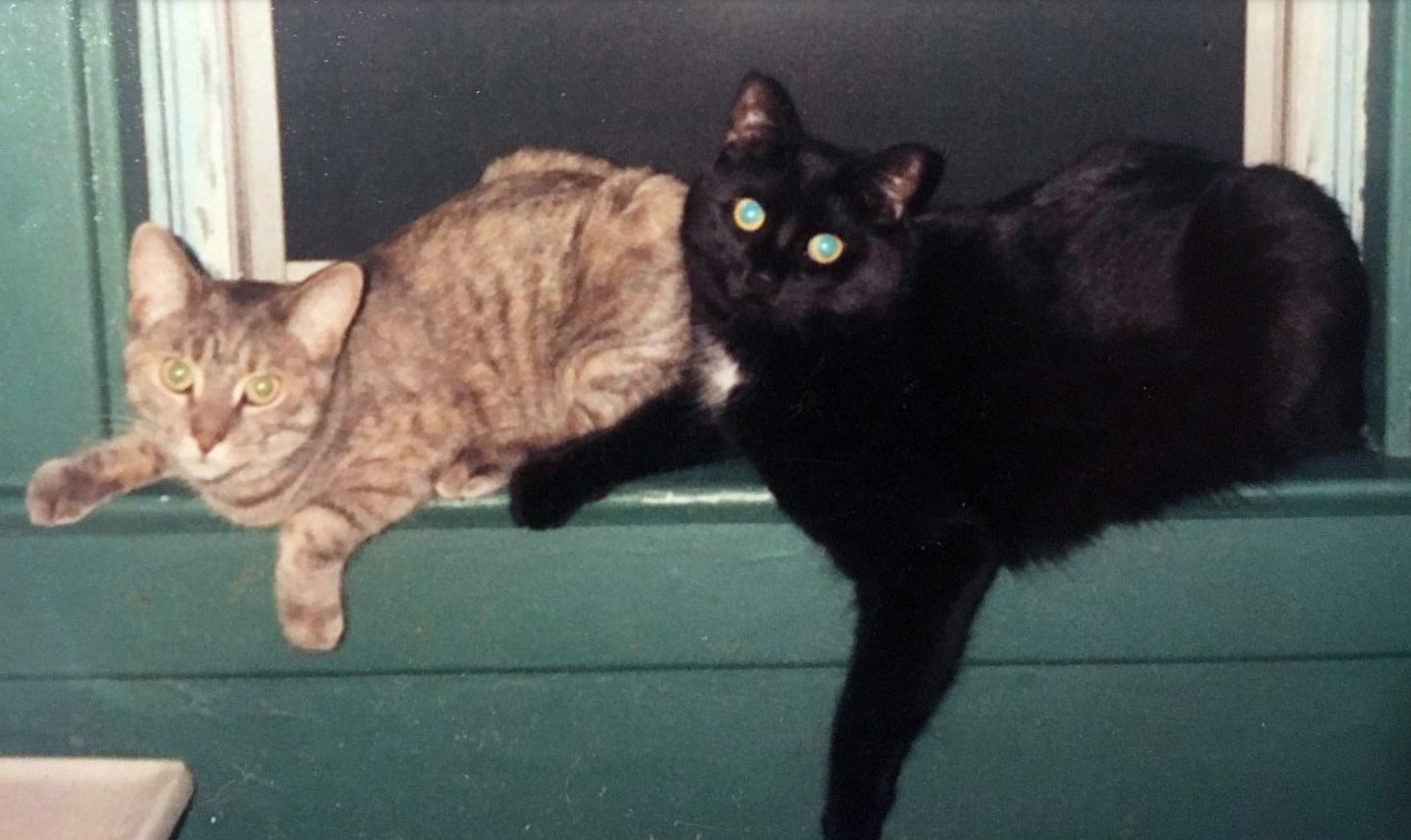
“Dear City,
Right after I moved out of my parents home, my fiancé and I got 2 cats since we’re both animal lovers.
Our kitties needed to be spayed and neutered. We ended up getting them declawed (front) as well. We thought that was ok…we were young.
The reason we thought this, was partially due to ignorance, but it was also trust. We trusted out vet. He said it was easier to fix and declaw at the same time.
At that point there had been no destruction in the home and scratching posts were being used. The thought of declawing hadn’t even entered our minds.
Our vet told us that declawing should be done to be proactive. Never once did he mention he could teach us how to trim our cats nails. He didn’t offer a choice. He didn’t offer any education as to what the operation entailed. It was all so routine. Like it was just ‘what you did’.
We trusted our vet with the care of our babies. He hurt them and we didn’t even know it. What is even worse, is that he thinks he was providing a SERVICE to us.
I’ve not once had a vet explain to me the horrible side of declawing but they are quick to offer it as a “proactive solution”.
Solution to what??? I have multiple scratching posts and pads. Never have I had to retrain a cat to not use the furniture.
Both cats lived to double digits. Lou was fine, however Paisley was ‘difficult’ from that moment on. Not horrible, but moody and prone to swiping and nipping.
Obviously I wasn’t a very good animal lover.
I realized later that she spent her life in pain. I thought she was just a difficult cat. But I still smothered her with love when she would let me. By the time I was ready for 2 new cats, I had become aware of the torture.
I have never declawed a cat since, and I’ve had 7 since my poor Paisley. When friends get a new cat, I make sure that I pass on whatever education I can. If I can change 1 persons mind…..
I’m sad because we have no local vets that refuse to declaw. But I do regularly bring it up to my vet. I keep telling him he would be the FIRST in our area.
I get that he’s nervous to remove that service. It’s a small, new practice. I’m trying not to be judgemental, but I won’t ever stop educating him on this practice.
And he knows should someone have the nerve to step up and change their practice, then I will leave. So City… When I knew better, I did better.
I hope through education I can change as many minds as possible.
Love you City

️”
——————————————-
“When i adopted my first cat, Sophie, I was young and perhaps materialistic and i thought declawing my new 1 year old cat seemed like a good idea. I asked the vet what was involved and if there could be any negative side effects. I honestly don’t recall it being explained to me as an amputation or mutilation of her paws and toes. I believed it to be a relatively harmless procedure that she would heal from quickly and be the same cat she was… just without any claws.
I brought her home and she was healed and back to her old self within 2 or 3 days. In hind sight… i think i made a huge mistake, since i now understand what declawing is. Sophie lived for 17 wonderful years and was an amazing companion who did not have litter box or biting issues and it’s only now that I realize how rare that is.
She acted like a completely normal and loving kitty but deep down I will never know if she had side effects or lasting pain and that will always haunt me.”
Here’s the full story. When you know better, you do better.
————————
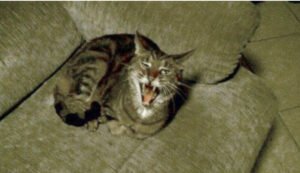
“Hi city the kitty. My name is Kristen and although I didn’t have my baby declawed four years ago I would like to tell you my story.
My baby, Tasmanian Devil was a graduation gift when I graduated high school in 2002. We waited til he was a year old then we got him fixed. When he got home he was so mad he tore up my mother’s couch.
We decided to talk to his vet about declawing. Well, we were told that he would be put under and there would be no pain whatsoever.
He was so very wrong, when it got cold his paws would swell and it was hard for him to walk. I felt horrible and heart broken.
Years later I learned exactly what the vet did to my baby and we weren’t informed about all the details.
Needless to say his vet up and retired.
I lost my baby January 4, 2016 due to respiratory problems. I miss him everyday but I got 13 wonderful years with him.
That’s my story on how uninformed and uneducated I was on declawing and I have other fur babies and would never ever put them through what Taz went through.
I really hope it helps other cat owners understand the pain and heartache it causes our four legged people.
In my house our cats and dogs are not animals, they are people. We love our people with all our being.
I have been wanting to write to you but never had the nerve.
This time I felt the need to make humans aware of this horrible crime.
Animal Abuse is what it is.
Thank you City for all that you are doing for your fellow kitties.”
Deceived By A Veterinarian and Declawed By A Laser
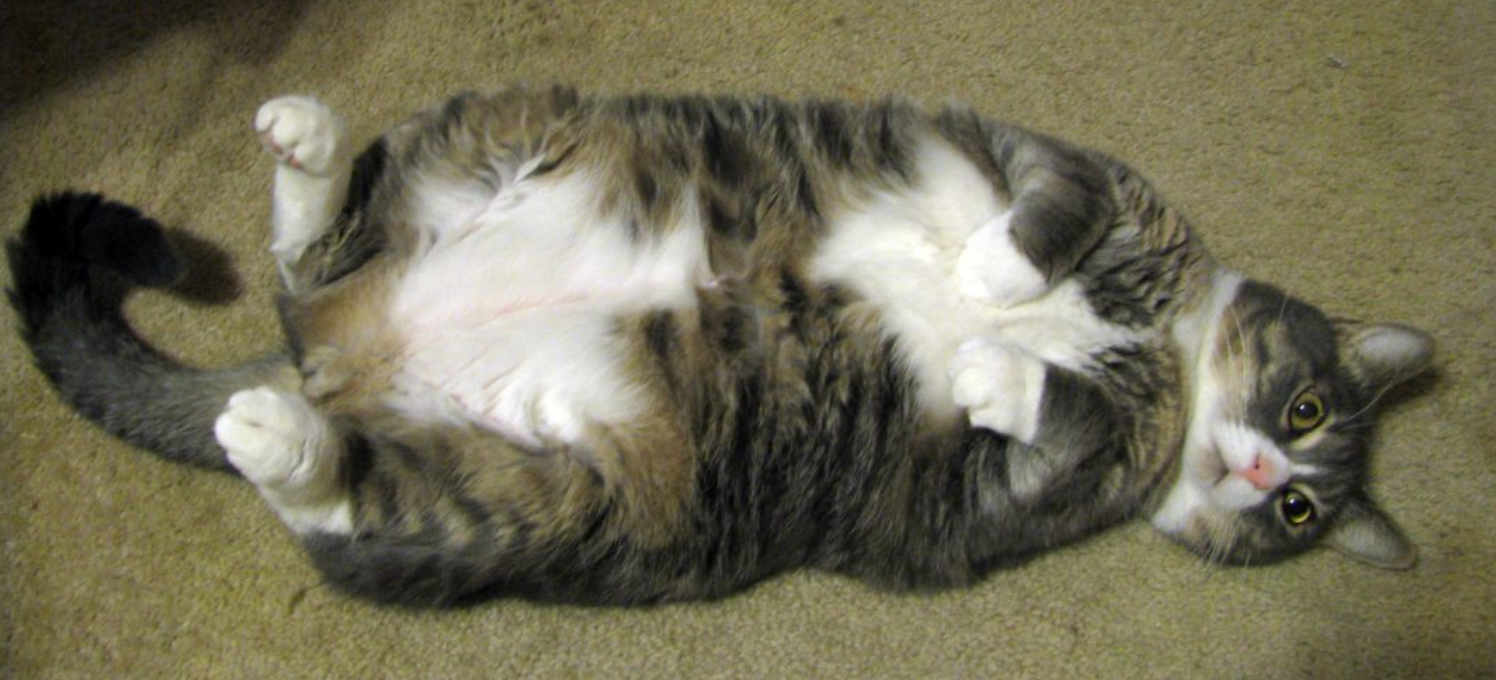
“Hi City the Kitty,
I unfortunately had my kittie Chuckie declawed when he was a kitten. That was seven years ago. We took him to the vet to get his shots and the vet told me there was a new laser surgery that didn’t hurt the kitties at all.
Since I knew he was not going to be outside ever, I thought that what the vet said was true and let him do it. That was before I started reading about how horrible declawing was and I’ve felt so guilty about doing that to Chuckie ever since.
Luckily, he hasn’t had any problems walking or any of the other complications I’ve read about, but I feel like I maimed him and I am often telling him how sorry I am for believing that the laser treatment was a humane, painless way to declaw.
I have two other kitties, Tony and Cefferino, who aren’t declawed and I will never put a cat through that again. I feel bad when I see comments from people saying how barbaric a person is for doing it and that they don’t deserve to have a cat.
Hopefully they will see through your work that some of us were fooled into thinking it was ok and feel horrible about it now.
Thanks for the good work!
from Melody, Chuckie, Tony and Cefferino”






